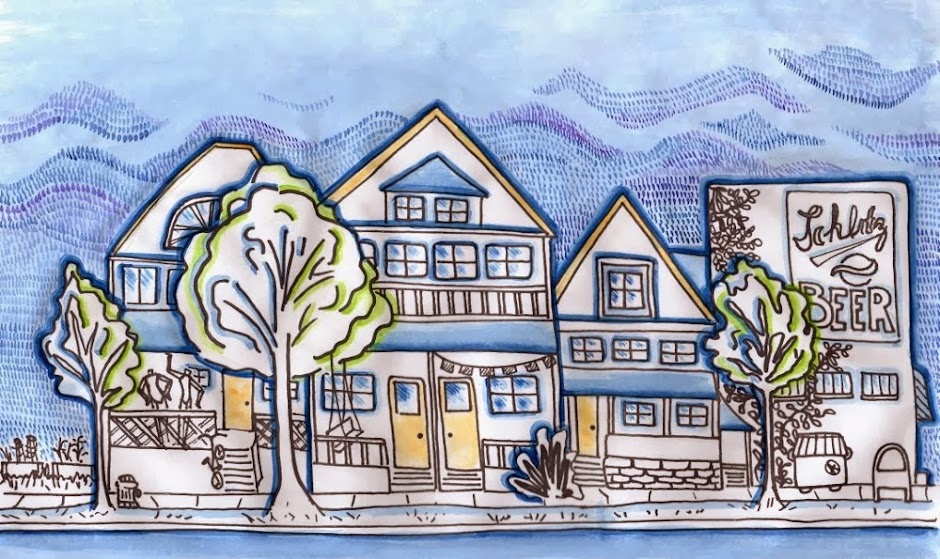Our house is built in the shape of a rectangle. The living room is a boxy space that stretches out into a cube-like kitchen, complete with four-sided cupboards and an oven made of 95 degree angles. Rooms jut off the side of the living room, at adjacent angles, giving the entire house a very symmetrical feel.
I ride my bike every morning across blocks and intersections. The topography of the Lake Erie Piedmont has convinced the City to expand out into very rational, row-like patterns, where one would be hard-pressed to be confused (except one's first month of life here).
There is a political map on the wall where I work that breaks the city down into sections by painting certain 'blocks' in different shades of red and purple. I find myself amazed at how easy it is to look at the map and pin-point exactly where the 'poor folks' live, where the businesses have maintained a hold, where the most Democrats are likely to reside, where not to ride my bike in the night and where a fun Thursday night could be had: could life be any more simpler and easier
to compartmentalize? Maybe in Erie, we tend to do it too often...
At work I often run into frustrating situations, where in an attempt to 'collaborate' with other non-profits, I am often rebuffed with multifarious excuses as to why it just won't work: "You'll be taking OUR kids." "Well, we don't want to let you play with our toys in the sandbox." "This side of town is our domain." In the end, we as non-profits break ourselves up into 'gangs' of influence who rule over certain turf; making decisions and having the only real right to SERVE the poor.
Race and social class are cleanly sliced into squares as if it was as easy as taking a knife to a freshly-baked tray of corn bread. Once you get passed Parade St., the houses take on a more dilapidated view, and the streets (for some unknown reason) become wide and virtually empty of cars--aside from those cars (generally large, luxury sudans with enormous rims) parked out front and along the sidewalk. It's the 'dark' part of the neighborhood; Parade St. is the second State St. of Erie, as it is the main strip through the immigrant and black section of the city. I've rarely, in all my life in Pennsylvania, seen such a clear boundary line drawn. To most of the middle-class, unassuming, hard-working, privileged, all-knowing whites who I've on the western side of State St., the "East Side' would be the prime kind of physical hell that stirs up haunting images of young, aggressive black men with hoods over their shaved skulls coming at their window with a bat; hoping to smash their window, take their money and shoot them in the stomach. Or, imagery of rows and rows of crack houses form in the consciousness, with young children dressed only in diapers on the front porch playing in an oblivious stupor as to how shitty and hopeless their life already is, while 'moma' stuffs another dirty-needle full of heroin into her thick vein. "Blacks don't know how to work." "Gosh, if only they'd get a job." " I don't want to sound racist, but I'd never let my daughter marry into this...."
Yeah, that's the one side of how Parade Street is portrayed, but on my morning bike rides, I never feel threatened; to the contrary, I'm often amazed at how much livier the place is in comparison to the lily-white, suburban west-side of the city: men and ladies talk and chat on front porches, children ride bicycles along cracked sidewalk, while others play football between old Victorian-style homes that look as though the wood is in thirst for another coat of paint. Women walk to do laundry in a communal 'mat'; carrying clothes and feeding children ice cream all in one motion. I hear the laugh of people, the bass of music and the sound of grills being turned on in the evening. And, as I ride home back to 'my' safe, more 'comfortable' part of the city, I'm struck by how quickly the corner-store bar and restaurant turns into the corner law firm, and how rapidly the chatter of voices on a the front porch, is changed into the flickering reflection of televisions turned on and the technical sound of a broadcasted voice speaking to shut-in people who only come out to take out the trash.
